It was nice to have a fully equipped kitchen, even if for just a day or two. This allowed us a leisurely breakfast - our first yogurt and granola in several days. A nice change from the daily croissant and expresso we have had since Rome.
Our plan today was to explore the City of Palermo
. It seems very little in Sicily is straight forward and getting from Monreale to Palermo was no different, so Fausto gave us directions. Catching the bus to Palermo involves going to a tabacchi to buy a ticket, then boarding a free bus that takes you about a mile down a steep hill and drops you at a spot about 300 meters from where the actual bus to Palermo stops. We never got a good explanation as to why the system works this way. We can only guess that it has something to do with the tour companies making money shuttling tourists and others up from Palermo to see the Cathedral in Monreale.
We stopped back at the tabacchi we had been to the night before and proceeded to buy our tickets. Using hand gestures, the proprietor tried to instruct us on where to catch the bus. Fortunately, there was a local samaritan who spoke English that stopped to help out. It turns out that Mario was born in Marineo, but lived in Queens, New York for 25 years. We chatted over coffee, but never quite got the full story about why Mario left Queens, except that he 'had to leave'
. We thanked him for his assistance and headed off to see the Cathedral.
Monreale's Cathedral is reputed to house the best collection of Norman mosaics in the world, and it did not disappoint. Cathedrals were part of the power game during the Medieval ages and William II, the Norman king wanted to demonstrate his authority over Sicily by installing a new archbishop. He built the Cathedral in Monreale to rival those in Palermo (see below) and Cefalu (see yesterday), thereby asserting his power over the region.
The culture, history and (some would say) the lifestyle of Sicily reflect the successive waves of immigrant occupiers throughout its history. Etruscans, Greeks, Romans, Moors, Byzantium and Normans were just a few. Indeed, Sicilians never really considered the formation of the Italian Republic as unification or liberation, but just another foreign take over. It seems that even today Sicilian life goes on in spite of the rest of Italian society, almost as if they are waiting for the next change in rulers
. What's fascinating is the effect that the blend of Norman, Moorish/Arabic and Byzantine culture has had on Sicily. This is readily apparent in the Cathedrals of Monreale, Palermo and Cefalu - each are striking, but in their own very different ways.
Done with our tour of the Cathedral, we headed to the bus stop where we met a young British woman. She seemed as uncertain as we were about the convoluted instructions on how to take the bus to Palermo, so we checked with an elderly Italian gentleman that was waiting for the bus too. He reassured us and then insisted on escorting the young British woman to the final stop. She accepted the kind gesture with some wariness. He took on the mission with care and attention, even if it wasn't completely appreciated.
The bus dropped us near the southern edge of the Old City, at the Piazza Independencia. This is also the location of the Palazzo dei Normani, the palace where Frederick II held court. We decided to take advantage of the cool morning temperatures to walk the streets of Palermo and save the tour of the palace for when we returned in the afternoon
.
We entered 'Old' Palermo through the gate at the southern end of the Corso Vittorio Emanuele and walked down the main street to the Cathedral. From there we toured three of the City's markets (Vucciria, Capo and Ballaro), where we bought fruit and olives. Along the way we stopped at several churches. We had lunch (insalata di mare and frutti di mare) in the Albergheria - the former Arab quarter. This is the oldest part of Palermo, inhabited continuously since the Phoenicians landed in 800 BC.
After lunch we returned to the Piazza Independencia to tour the Palazzo dei Normanni. We arrived at 2:55 to find a sign posted saying they were closing at 2:45 today instead of the usual 5:45. For the second time in 24 hours we were reminded that we should always double check hours! Even though it was early we decided to return to Monreale and relax. We took advantage of the extra time to stop back into the Cathedral in Monreale. (We were so impressed that we had to see it twice.) Unfortunately, by late afternonn the tour groups had arrived en masse. Although the mosaics were still impressive, the Cathedral is a much lovelier and quieter at 8:30 in the morning.
Back at our apartment, we spent the evening relaxing on the balcony - enjoying Sicilian bread, fruit, olives, salami and cheese.
DAY 25: The Streets of Palermo
Saturday, September 07, 2013
 Palermo, Sicily, Italy
Palermo, Sicily, Italy
Other Entries
-
7DAY 7: Böhmfeld & Mammoths
Aug 2018 days prior Böhmfeld, Germanyphoto_camera10videocam 0comment 1
Böhmfeld, Germanyphoto_camera10videocam 0comment 1 -
8DAY 8: The St. James Way
Aug 2117 days prior Böhmfeld, Germanyphoto_camera12videocam 0comment 0
Böhmfeld, Germanyphoto_camera12videocam 0comment 0 -
9DAY 9: in Wettstetten mit Sigrid
Aug 2216 days prior Ingolstadt, Germanyphoto_camera6videocam 0comment 0
Ingolstadt, Germanyphoto_camera6videocam 0comment 0 -
10DAY 10: nach Würzburg
Aug 2315 days prior Wurzburg, Germanyphoto_camera6videocam 0comment 0
Wurzburg, Germanyphoto_camera6videocam 0comment 0 -
11DAY 11/12: Würzburg
Aug 2414 days prior Wurzburg, Germanyphoto_camera12videocam 0comment 0
Wurzburg, Germanyphoto_camera12videocam 0comment 0 -
12DAY 13: Austria & Northern Italy
Aug 2612 days prior Innsbruck, Austriaphoto_camera6videocam 0comment 0
Innsbruck, Austriaphoto_camera6videocam 0comment 0 -
13DAY 14/15: Florence
Aug 2711 days prior Florence, Italyphoto_camera18videocam 0comment 1
Florence, Italyphoto_camera18videocam 0comment 1 -
14DAY 16: Volterra & Siena
Aug 299 days prior Volterra, Italyphoto_camera14videocam 0comment 0
Volterra, Italyphoto_camera14videocam 0comment 0 -
15DAY 17: Tuscany & Lazio
Aug 308 days prior Massa Marittima, Italyphoto_camera10videocam 0comment 0
Massa Marittima, Italyphoto_camera10videocam 0comment 0 -
16DAY 18: Rome - Day 1
Aug 317 days prior Rome, Italyphoto_camera16videocam 0comment 0
Rome, Italyphoto_camera16videocam 0comment 0 -
17DAY 19: Rome - Day 2
Sep 016 days prior Rome, Italyphoto_camera16videocam 0comment 1
Rome, Italyphoto_camera16videocam 0comment 1 -
18Sep 02, 2013
Sep 025 days prior Anzio, Italyphoto_camera1videocam 0comment 0
Anzio, Italyphoto_camera1videocam 0comment 0 -
19DAY 20: From Rome to Naples
Sep 025 days prior Formia, Italyphoto_camera4videocam 0comment 2
Formia, Italyphoto_camera4videocam 0comment 2 -
20DAY 21: San Sebastiano
Sep 034 days prior San Sebastiano al Vesuvio, Italyphoto_camera8videocam 0comment 2
San Sebastiano al Vesuvio, Italyphoto_camera8videocam 0comment 2 -
21DAY 22: The Amalfi Coast
Sep 043 days prior Positano, Italyphoto_camera17videocam 0comment 1
Positano, Italyphoto_camera17videocam 0comment 1 -
22DAY 23: Pompeii & Ferry to Sicily
Sep 052 days prior Pompei, Italyphoto_camera16videocam 0comment 0
Pompei, Italyphoto_camera16videocam 0comment 0 -
23DAY 24: Cefalu & Marineo
Sep 061 day prior Monreale, Italyphoto_camera16videocam 0comment 1
Monreale, Italyphoto_camera16videocam 0comment 1 -
24DAY 25: The Streets of Palermo
Sep 07 Palermo, Italyphoto_camera19videocam 0comment 1
Palermo, Italyphoto_camera19videocam 0comment 1 -
25DAY 26: Segesta & Erice
Sep 081 day later Erice, Italyphoto_camera18videocam 0comment 1
Erice, Italyphoto_camera18videocam 0comment 1 -
26DAY 27: Southwestern Sicily
Sep 092 days later Agrigento, Italyphoto_camera12videocam 0comment 1
Agrigento, Italyphoto_camera12videocam 0comment 1 -
27DAY 28: The Ruins at Agrigento
Sep 103 days later Agrigento, Italyphoto_camera12videocam 0comment 0
Agrigento, Italyphoto_camera12videocam 0comment 0 -
28DAY 29: Siracusa & Orytigia
Sep 114 days later Syracuse, Italyphoto_camera16videocam 0comment 0
Syracuse, Italyphoto_camera16videocam 0comment 0 -
29DAY 30: Catania & Taormina
Sep 125 days later Taormina, Italyphoto_camera24videocam 0comment 0
Taormina, Italyphoto_camera24videocam 0comment 0 -
30DAY 31: Arrivederci Sicily
Sep 136 days later Sala Consilina, Italyphoto_camera6videocam 0comment 2
Sala Consilina, Italyphoto_camera6videocam 0comment 2 -
31DAY 32: Basilicata & the Gargano
Sep 147 days later Foce Varano, Italyphoto_camera10videocam 0comment 0
Foce Varano, Italyphoto_camera10videocam 0comment 0 -
32DAY 33: Termoli & Rimini
Sep 158 days later Rimini, Italyphoto_camera14videocam 0comment 0
Rimini, Italyphoto_camera14videocam 0comment 0 -
33DAY 34: Ravenna & the Po Delta
Sep 169 days later Ravenna, Italyphoto_camera14videocam 0comment 0
Ravenna, Italyphoto_camera14videocam 0comment 0 -
34DAY 35: Venice - Day 1
Sep 1710 days later Venice, Italyphoto_camera16videocam 0comment 1
Venice, Italyphoto_camera16videocam 0comment 1 -
35DAY 36: Venice - Day 2
Sep 1811 days later Venice, Italyphoto_camera14videocam 0comment 0
Venice, Italyphoto_camera14videocam 0comment 0 -
36DAY 37: The Dolomites & Austria
Sep 1912 days later Kitzbühel, Austriaphoto_camera8videocam 0comment 0
Kitzbühel, Austriaphoto_camera8videocam 0comment 0 -
37DAYS 38-40: Angela's 60th!!
Sep 2114 days later Rohr, Germanyphoto_camera26videocam 0comment 0
Rohr, Germanyphoto_camera26videocam 0comment 0 -
38DAY 41: Traveling Back Home
Sep 2316 days later Auburn, United Statesphoto_camera8videocam 0comment 0
Auburn, United Statesphoto_camera8videocam 0comment 0

 Palermo, Sicily, Italy
Palermo, Sicily, Italy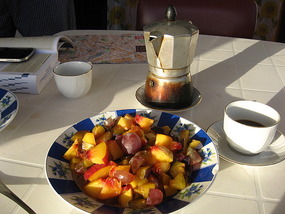
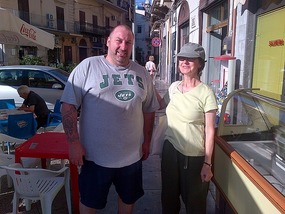
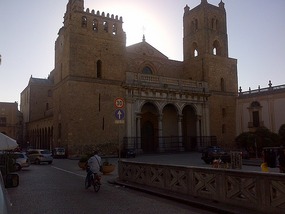
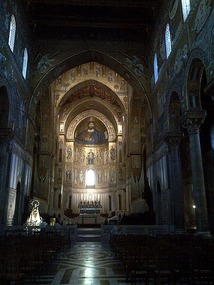




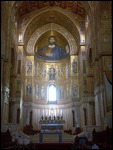
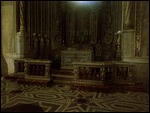
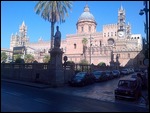
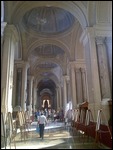
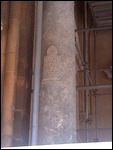
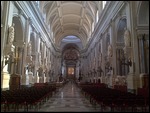
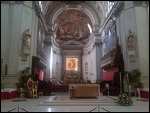
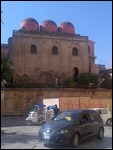
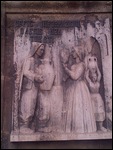

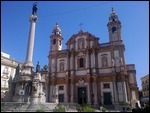
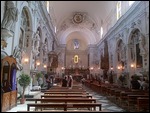
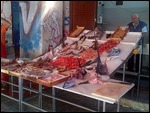
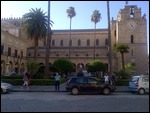
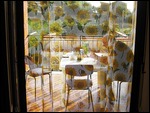
2025-05-23